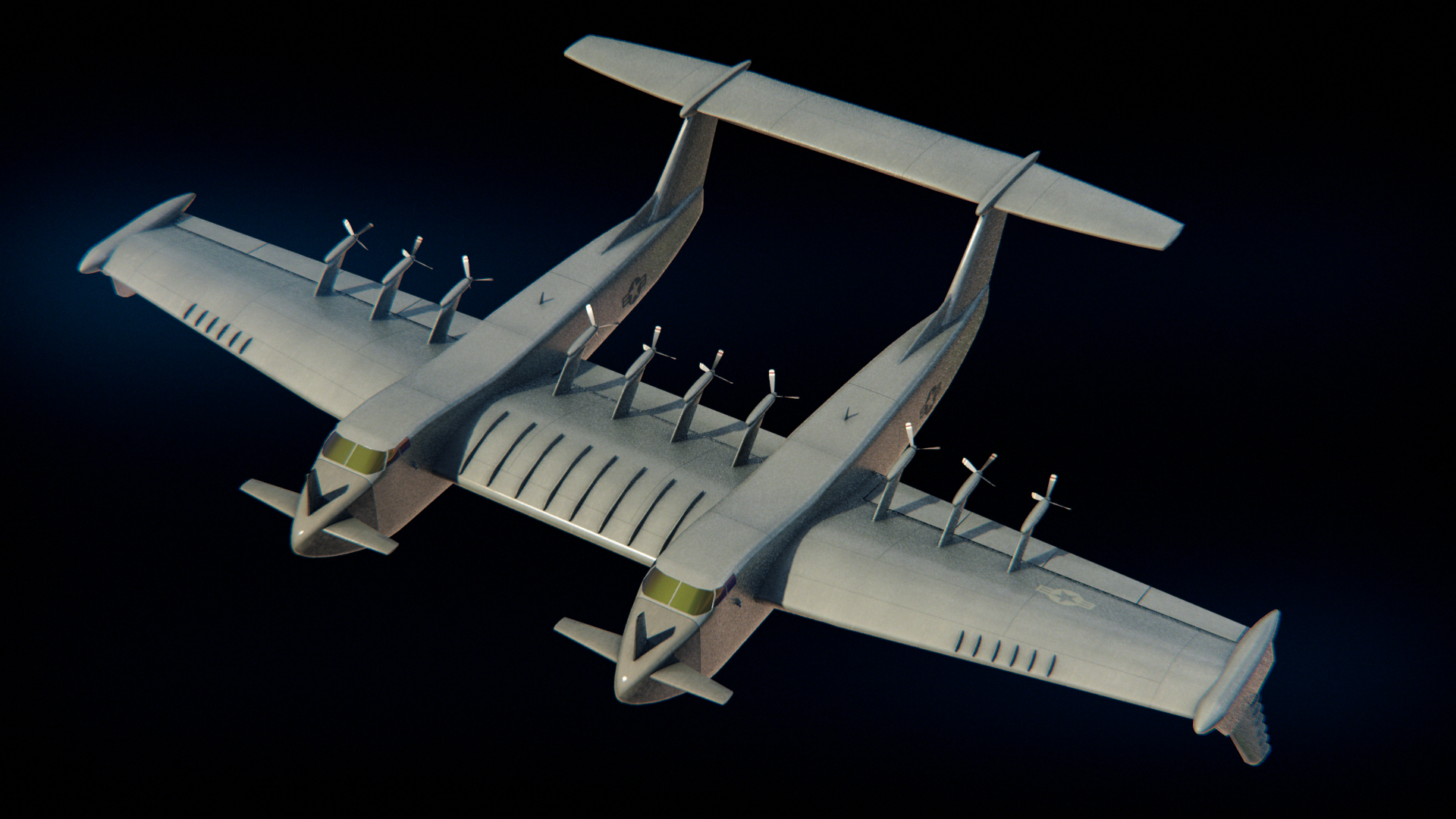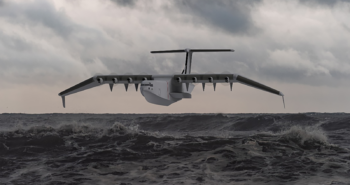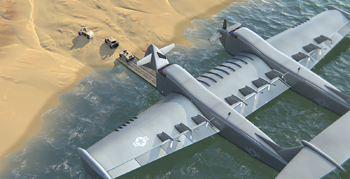
Concept art of DARPA’s future Liberty Lifter vehicle. (Image provided by DARPA.)
WASHINGTON — The Defense Advanced Research Projects Agency has tapped two teams, one led by General Atomics and another by Boeing subsidiary Aurora Flight Sciences, to begin design work on the agency’s long-distance, low-flying Liberty Lifter full-scale demonstrator.
General Atomics will work with Maritime Applied Physics Corp. and Aurora Flight Sciences will team up with Gibbs & Cox, a company owned by Leidos, and ReconCraft to work on their designs, DARPA announced on Wednesday.
“The planned Liberty Lifter demonstrator will be a large flying boat similar in size and capacity to the C-17 Globemaster III transport aircraft,” according to an agency statement. “Goals include takeoff and land in sea state 4, sustained on-water operation up to sea state 5, and extended flight close to the water in ground effect with the capability to fly out of ground effect at altitudes up to 10,000 feet above sea level.”
Breaking Defense previously reported that General Atomics received a contract to work on the Liberty Lifter program, however, both the company and DARPA declined to fully elaborate on that award at the time. One of the DARPA officials leading the effort told Breaking Defense in an interview last May that Liberty Lifter seeks to revolutionize the Pentagon’s airlift and sealift capabilities by utilizing a well-known physics trick dubbed the “wing-in-ground effect.”

A Liberty Lifter conceptual design by Aurora Flight Sciences. (DARPA)
“If you’ve ever been on an airliner or watched a 737 land, sometimes they come in close, and then they almost kind of like go to a hover,” said Alexander Walan. That “hover” happens because the plane’s wings are pushing air down towards the ground — or the ocean in DARPA’s case — creating a high-pressure pocket of air that, in turn, helps hold the plane up, meaning it has to rely less on its own power to stay aloft.
Taking advantage of that “hover” over long distances while crossing the ocean is essentially how DARPA believes it can create a vehicle capable of carrying large amounts of cargo while consuming less fuel than aircraft such as the C-17.
In DARPA’s Wednesday statement, it said General Atomics plans to design a “twin-hull, mid-wing design to optimize on water stability and seakeeping,” while the Aurora Flight Sciences team’s preliminary idea “more closely resembles a traditional flying boat with a single hull, high wing and eight turboprops for primary propulsion.”

General Atomics envisioned proposal for DARPA’s Liberty Lifter program. (DARPA)
“GA-ASI is committed to the advancement of a cargo seaplane design capable of delivering heavy cargo and utilizing wing-in-ground effect to revolutionize transport to support tomorrow’s warfighter,” GA-ASI President David Alexander said in a statement published shortly after DARPA’s announcement. “Our experience in maritime aircraft such as the MQ-9B SkyGuardian and SeaGuardian will help advance the capabilities of the Liberty Lifter concept and expand our cargo aircraft portfolio.”
DARPA’s announcement omitted monetary details about the contract award, but General Atomics said the deal “covers the next six months” and if all options are exercised, the total contract value could reach $29 million.
“Developing an X-plane requiring innovative solutions and complex controls is at the core of Aurora’s expertise,” said Graham Drozeski, vice president of government programs at Aurora Flight Sciences. “We look forward to solving this challenge and providing a new strategic capability to support tomorrow’s warfighter.”
Aurora did not include monetary details about the contract award in its own announcement made on Wednesday.
DARPA said it expects demonstrations to occur in the program’s second phase which will start in “mid-2024.”
Navy jet trainer fleet operations remain paused after engine mishap
One week after the incident, a Navy spokesperson says the service is continuing to assess the fleet’s ability to safely resume flight.


























